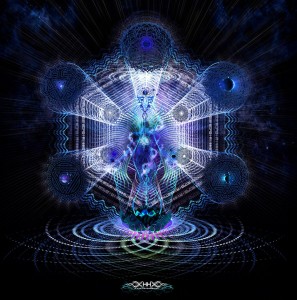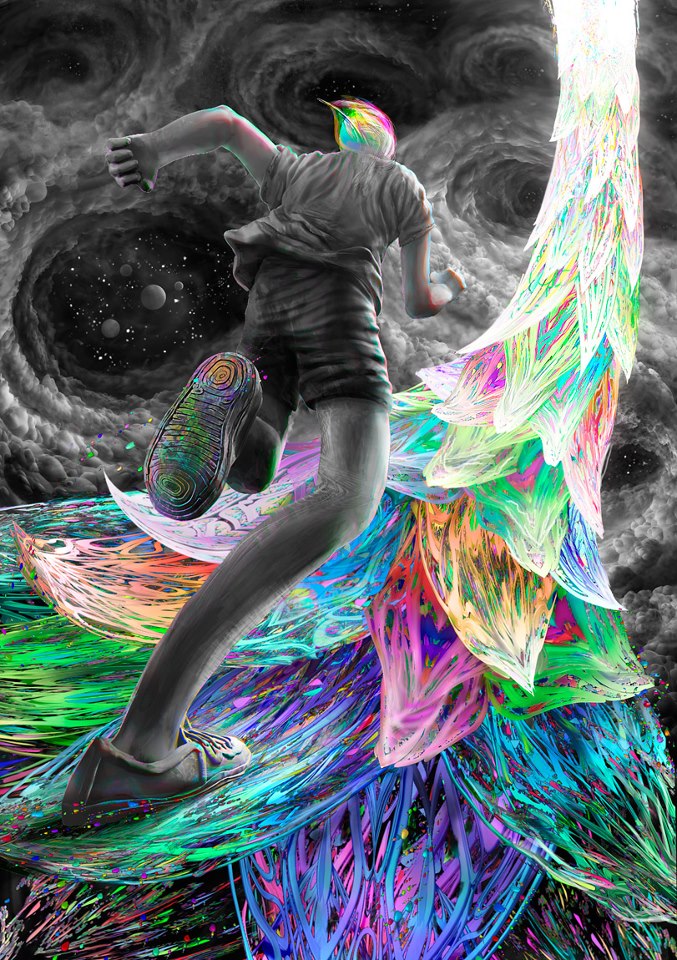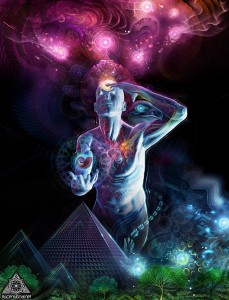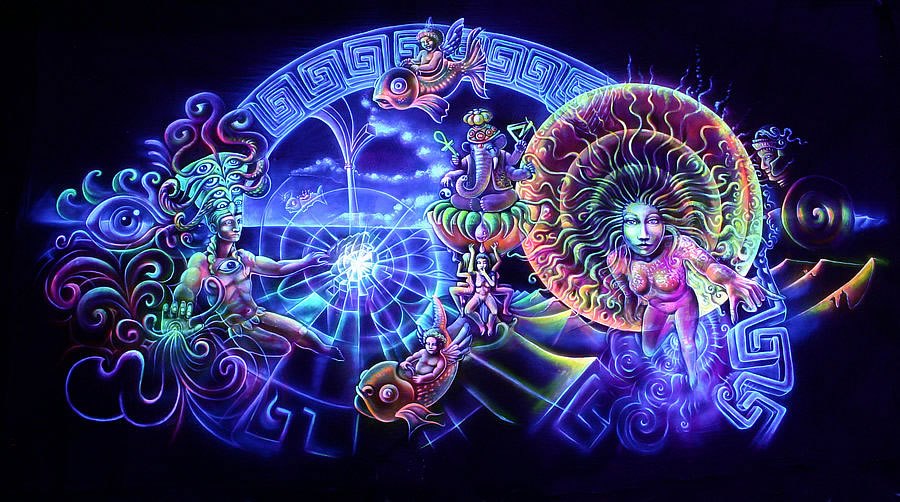The Ego
The following are select excerpts from The Seth Material on the ego.
——-
“The ego, if you recall, is self’s attempt to set itself apart from action, and to see or perceive action as an object. The ego attempts to attain stability and dominance, and resents change. It seeks to limit certain perceptions, to block out many perceptions of which the self is knowledgeable. In this way limitations become fairly rigid.
An ego could be compared to a small dam in this respect. However, action constantly forms perceptual patterns in which it can view itself. Again, these patterns are framed one within the other, and they could be said to form that imaginary structure which we called the fifth dimension, so many sessions ago.
A particular consciousness is a gestalt of these conceptual patterns; but there is nothing to prevent a consciousness from increasing itself by experiencing other conceptual patterns or patterns of perception. This assimilation would increase, not decrease, any given consciousness. We use, or you use, words merely as a convenience. We therefore say that a consciousness is a gestalt of patterns of perception, by which action knows itself. But the patterns of perceptions may grow, and the consciousness reach out. The consciousness has changed. It is no longer the same consciousness, since it has extended itself. Yet it is the same consciousness, on the other hand, because it is that which has extended itself. So words can confuse us.
A consciousness can be said to be a gestalt of patterns of perception then; and while the definition stands, it can only apply to any given consciousness for the breath of an instant, since the patterns of perception, being action, have already changed; and the particular consciousness of which we spoke, and which we tried to limit and pin down, is gone.
Yet as you can see, what it was when we spoke of it is still present in what it will by now have become. The ego, through its own nature and characteristics, attempts to limit such change, but it succeeds only in limiting itself by limiting its perceptions. It still must change, as is obvious. But it changes along certain lines, moving within certain patterns of perception which are characteristic of it….
….The fact is, that any given self, as we have described the self, may have more than one ego, though these egos will not be aware of each other, even though operating simultaneously. You have information on the inner ego. There is also a dream ego, in that there is within that reality field a directive part of the self that is concerned with the construction of purpose and meaning.
You can here indeed see where I am leading you. The deeply and strongly dimensioned sphere I used as an analogy for an action, if you recall, for any portion of action; you can now indeed further imagine one entity being composed of such an action, with egos like many faces looking outward in all directions, and each perceiving vastly different fields or reality; looking inward and outward, backward and forward as it were, through and beyond. And yet each action, or entity, is a part of another, and is both within and without another. And none of it is meaningless, and yet in a basic manner all of it has the meaning that you give it.
And what meaning you give it is there, and part of it, since you who project the meaning are yourselves part of it. The inner self, therefore, that inner portion of action which forms the egos, and the selves,through the dilemmas of which I have spoken.
Part of the self knows, and knows that it knows. Part of the self knows, and does not know it knows. The creative dilemmas of which I have spoken are the basis for all realities, and the heart of all meaning.” (ES Book 3: Session 141)
——————-
 “However, the entity can be partially defined as the sum of all the selves within a given range of action, the simultaneous totality which on the one hand then cannot yet exist, since action can never complete itself, yet representing that impetus forever frustrated on the part of action for complete materialization.
“However, the entity can be partially defined as the sum of all the selves within a given range of action, the simultaneous totality which on the one hand then cannot yet exist, since action can never complete itself, yet representing that impetus forever frustrated on the part of action for complete materialization.
The blueprint is actions intent. The selves are action in progress toward this blueprint.
There are selves within selves. Each self is interwound with all others, and yet each self, being composed of action, has within it the powers of action toward change, development, expansion, and the drive toward fulfillment.
Herein also lies the freedom of each self: not being limited. We have spoken in the past of capsule comprehension. It is indeed a characteristic of action, indivisible from action, equally interwoven within it.
Therefore each portion of action is aware of its simultaneous experience within all levels. Again, action carries itself along. Each self is therefore aware of its previous gestalt affiliations. Now. Identities may or may not have egos.” (ES Book 3: Session 142)
————-
“The personality and the ego are not the same.
The personality has strong connections with the inner self. The personality is that consciousness of self of which I have spoken, which is aware of itself within, and a part of, action. The ego attempts to stand apart from action, and to stand apart from the personality, and to mold the personality into a more or less permanent and stable, dependent portion of the ego itself.
The ego would if it could, stop personality’s motion and development for the security of stability. The ego would drive the personality into preconceived channels. This consciousness-of-self is seen in man as personality, as the human personality. It appears, however, in all types of consciousness to one degree or another.
Therefore, consciousness-of-self can appear with or without the existence of an ego. Consciousness-of-self is an attribute then of all physical species, regardless of their classification. Personality, human personality, is simply the name given to this class of self, as applied and seen within human beings. Personality changes and acts upon all other action. Personality, then, can be seen to operate as a field of action in identity; but identity that is conscious of its relation to action as a whole.
 The peculiar and individualistic aspects of personality are the result of those camouflaging abilities of which we have spoken earlier. Those portions of the personality which escape ego’s attempts to dominate are held suspect in egos eyes. Ego considers them as invalid and dangerous to its own supremacy. When ego is forced to admit that personality changes, it will do its best to avoid this knowledge. The more rigid an ego is, the more danger there is that the individual will have difficulties in all kinds of adjustments.
The peculiar and individualistic aspects of personality are the result of those camouflaging abilities of which we have spoken earlier. Those portions of the personality which escape ego’s attempts to dominate are held suspect in egos eyes. Ego considers them as invalid and dangerous to its own supremacy. When ego is forced to admit that personality changes, it will do its best to avoid this knowledge. The more rigid an ego is, the more danger there is that the individual will have difficulties in all kinds of adjustments.
Because of its nature ego does not want to adjust. It wants adjustments to be made to it. Because ego is another manifestation of action, it is of course impossible for its aims to be realized. For all its attempts at stability and control ego itself constantly changes. Ego most of all resents and fights against time as you know it, yet ego is to a large extent responsible for your conception of time. Basically, ego fears both the past and the present. It fears the past because it has already lost control of the past. It fears the future because it is not yet in control of it. It seeks continuity of identity, yet it is forced to realize that the “I” of today is hardly the “I” of thirty years ago.
It is the ego which fears death so strongly. And yet the stability which ego so urgently seeks would, indeed, result in a death, since no further action be allowed.
Ego also fears spontaneity, for it cannot control action; being a part of action, most of its efforts of necessity are thwarted. Yet it is precisely this struggle between ego’s struggles for stability, and the personality’s attempt to expand spontaneously, that is at the basis of much of mankinds achievements, and that certainly the basis for much of his art.
In his art we have the nostalgia of the ego for past time, and for lost control of a self that has already vanished and changed into something new. It is ego who plans for the future, trying, to anticipate the environment in which it must operate. Its anticipations, of course, then form that environment.
The ego therefore is a very necessary force within your field. It is also regardless of current psychological beliefs, the basis for aggression in general. All aggression is not detrimental, for example.
Because the personality is that part of the individual which is conscious of itself as a part of action, and therefore aware of its relation with action,the personality is that part of the individual which survives physical death.
The personality is not the whole self. It is a portion of the whole self, which is activated during a particular existence. The ego, as I have explained, does not vanish. However, it must always be remembered here that the ego is not the self-conscious self in its entirety by any means. It is simply a portion, a field of focus whereby the self attempts to objectify itself within the world of matter.
It simply ceases to so objectify itself, but it retains, or the self retains, memory of that objectification.
The personality necessarily continues to change after physical death. After physical death the personality simply ceases to project itself, as a rule, within the physical field, and no longer focuses within it.
The personality is much more extensive and expansive than you realize…
…Theoretically, the self is unlimited, if you will recall. The ego within your field is limited because of the nature of its rigidity. The ego operates as a partitioning agent. It directs and uses the abilities of the personality for manipulation in the physical universe. It can mobilize a smaller or larger amount of these energies according to its own strength. It has a small focus but a powerful one.
I mentioned earlier that the personality is an excellent example of action as it is sometimes projected into the physical field, while not appearing within it in tangible form. For here we see many of action’s characteristics: the mobility that does not necessarily involve space, the thrusts outward, and the corresponding thrusts inward. We see action acting upon itself and constant change.” (ES Book 3: Session 146 bold emphasis mine)


